
Exploring Turkey with photographer Mehmet Ozbalci of Istanbul-based Fantastic Photo Tours was a once-in-a-lifetime opportunity to see and photograph the best of Turkey’s natural, cultural and historic treasures.
GOOD MORNING CAPPADOCIA
Every morning at sunrise, some 150 brilliantly coloured balloons take flight over Cappadocia. It’s a breathtaking sight and you don’t even have to be in a balloon to enjoy the spectacle. This is our view from a road-accessible plateau overlooking Love Valley. From our vantage point on the edge of a cliff, the balloons often pass by below us, drifting silently through the “fairy chimney” rock formations.
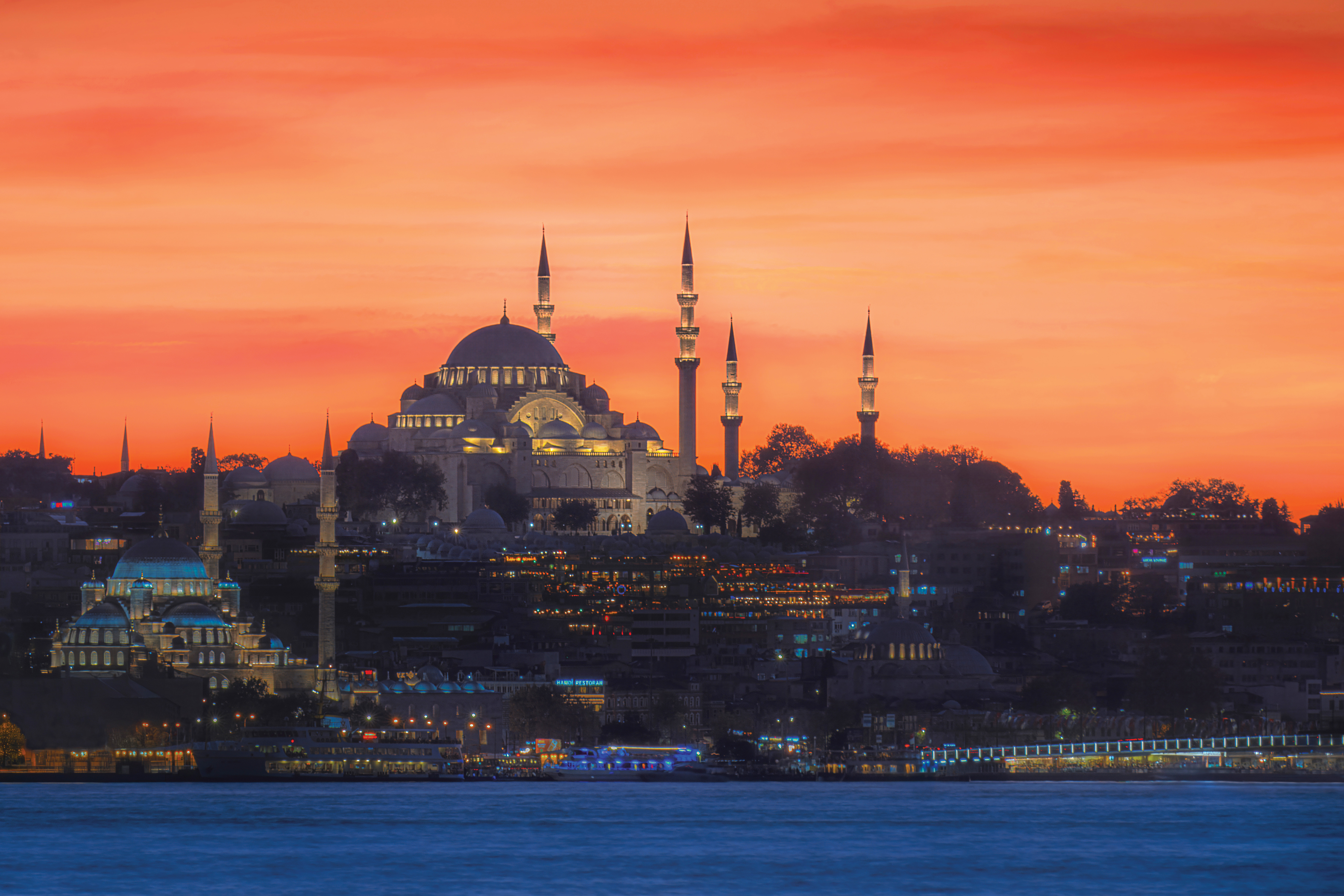
Straddling two continents, ISTANBUL is a mesmerizing tapestry woven of history, culture, myth and mystique. First known as Byzantium then later as Constantinople, it has been the crossroads of civilizations for thousands of years.
Where East Meets West
Istanbul was a pivotal stop along the Silk Road, the legendary trade route which for centuries connected the East and West. Its strategic location at the intersection of Europe and Asia brought together a melting pot of cultures, ideas, and trade and created the vibrant legacy of historic markets, palaces and mosques that makes modern Istanbul so fascinating. You may want to base yourself in Sultanahmet on the European side for it’s easy proximity to many of the major attractions, but don’t overlook lesser known neighbourhoods like colourful and charming Balat, chock-a-block with galleries, shops and delightful cafés. Not far from the Spice Market, we visit Sirkeci railway station, the terminus of the legendary Orient Express which whisked passengers between Paris and Istanbul in grand luxury. In the restored waiting room one can almost see the ghost of Hercule Poirot waiting to catch his famous train.

Spice of Life
Istanbul’s Grand Bazaar is certainly worth a visit, but I loved the colourful Spice Market, with its intense scents of pepper, cinnamon, nutmeg and saffron. Try one of the exotic tea mixtures on offer (they taste just as good as they look) along with copious free samples of Turkish Delight. When your senses are completely overloaded, head out into the surrounding maze of alleys for a lively street market selling everything from jewellery to rugs to toasters.
LOOK UP. LOOK WAY UP...
I’m getting dizzy, but still I can’t stop gazing heavenwards, awe-struck by the domes and magnificent tiled ceilings of Istanbul’s mosques and palaces. The breathtaking Hagia Sophia is a masterpiece of Byzantine architecture, originally built as a cathedral in 537 AD under Emperor Justinian I. Following the Ottoman conquest in 1453, it was converted into a mosque. In 1935, it became a public museum. Today, it once again serves as a mosque, although vestiges of its Christian origins are still visible if you look closely. The main floor these days is reserved for prayer, but the mezzanine is open to visitors. Topkapi Palace was the opulent residence of Ottoman sultans for nearly 400 years. Set above the Bosphorus, the palace features grand courtyards, intricately tiled rooms, a treasury filled with jewels and the elaborately tiled Harem, once the private quarters of the sultan’s family and concubines.
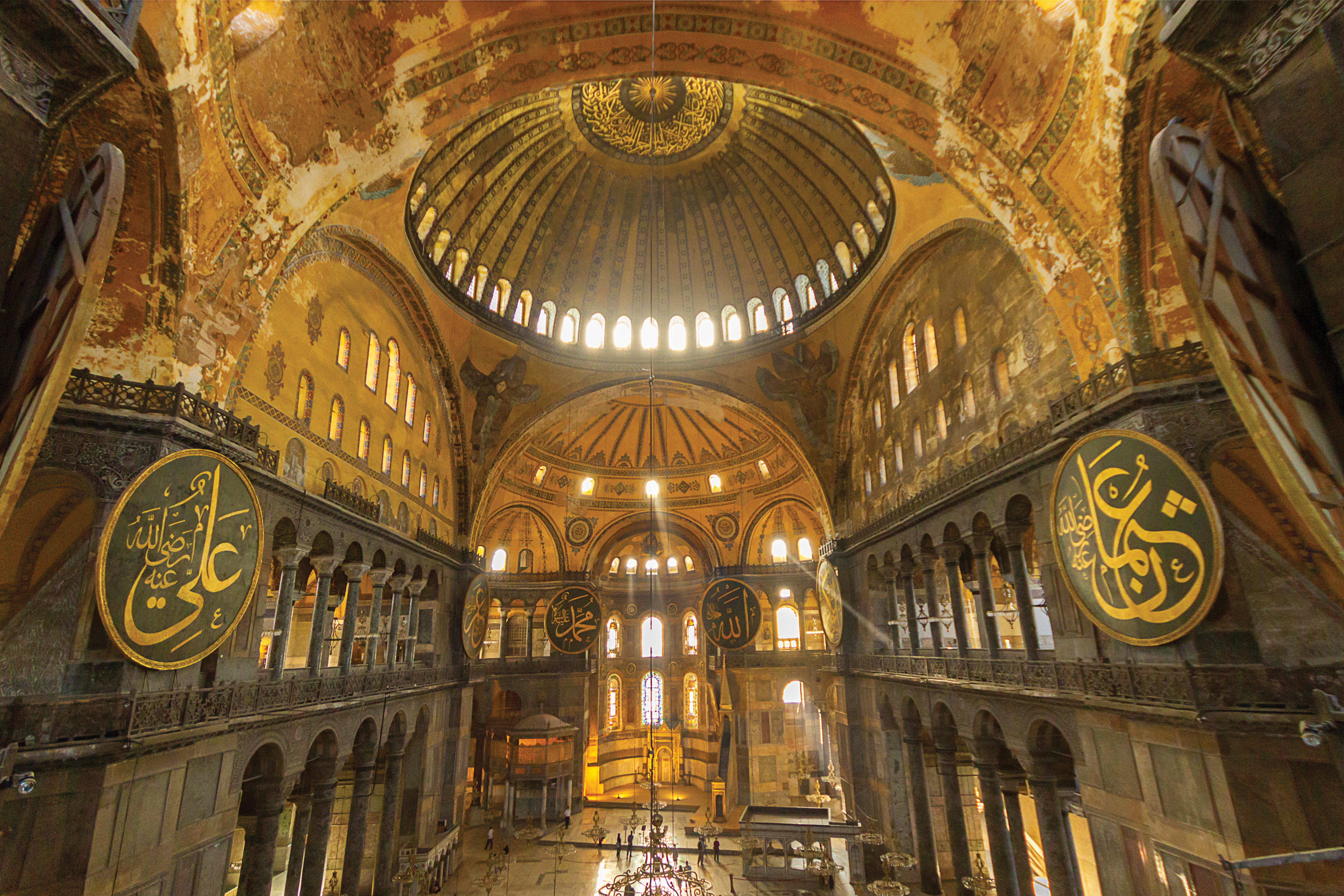
A GLIMPSE OF ANTIQUITY
A visit to Ephesus is a captivating journey through history, surrounded by the relics of ancient civilization. Wandering through the marble streets, we imagine the ancient city as it once was, bustling with trade and culture. We stop to admire the impressive Library of Celsus and marvel at the spectacle of the grand amphitheatre. But we are especially captivated by the lesser-known Terrace Houses with their carefully-preserved frescoes and intricate mosaics. Often referred to as the “houses of the rich,” they offer an intimate glimpse into urban life in this ancient city.
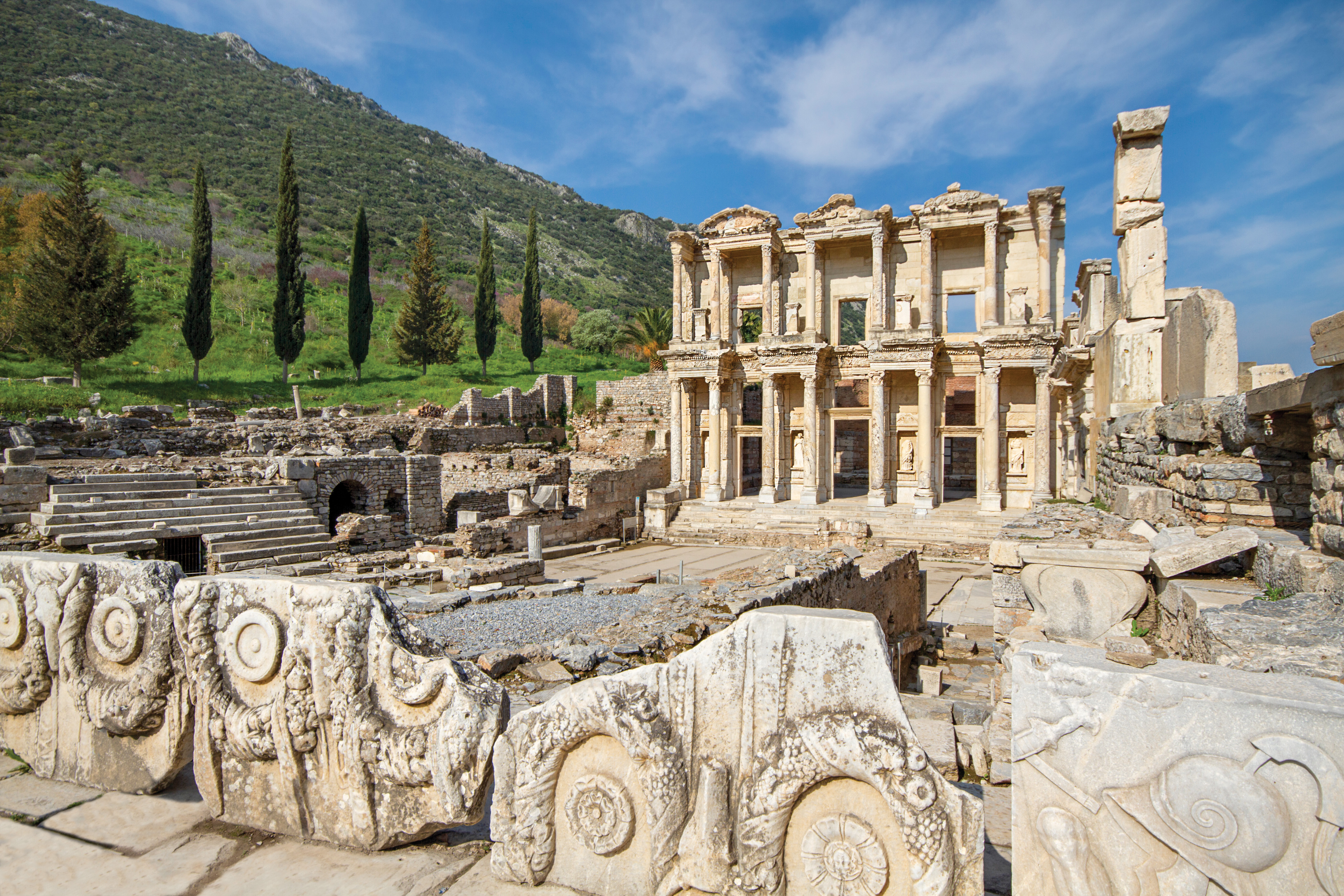
THIS KOOL KITTY is Garfield of Ephesus. He’s an international celeb with his own Instagram account, and a more than 10,000 followers. He spends his day in the historic ruins posing graciously for selfies with adoring fans (and will accept a tip if it tastes like chicken). Street cats in Turkey are a beloved feature of urban life, especially in cities like Istanbul. These cats are known for their independence and charm, often found lounging in cafés, shops, and on sunny sidewalks. Turkish culture embraces the felines, and locals leave food and water for them. Unlike in many other countries, street cats are seen not as strays but as beloved members of the community.
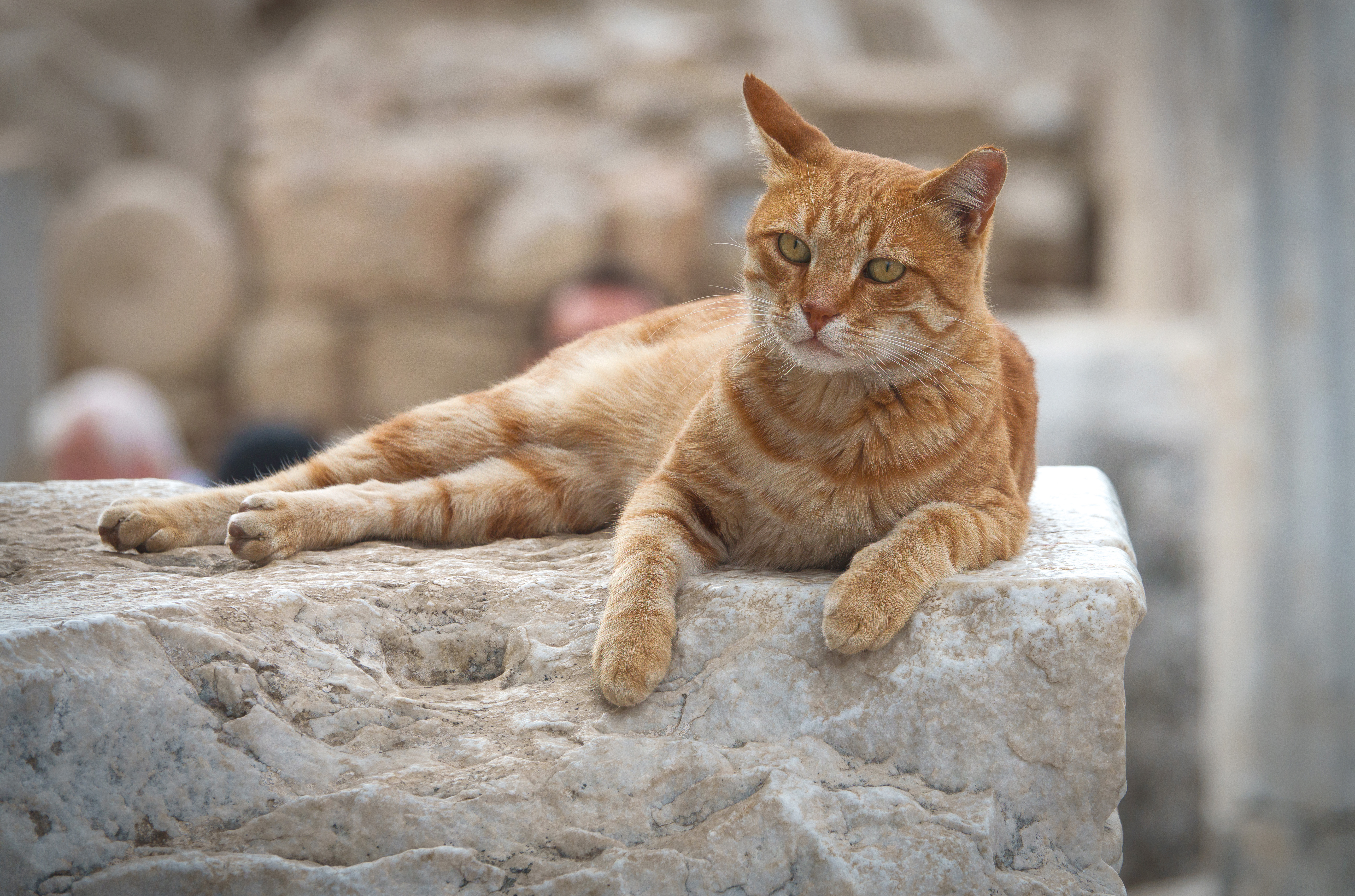
MORE THAN JUST BALLOONS
Cappadocia, located in central Turkey, is a stunning region, famous for its “fairy chimneys,” which are tall, thin spires of rock created by volcanic activity and erosion. The surreal landscape offers fascinating hiking opportunities for all fitness levels. The area is also dotted with ancient rock-cut churches and magnificent frescoes dating back to early Christianity. The most famous area is Göreme Open-Air Museum, a UNESCO World Heritage site. But Monk Valley, (or Pasabag Valley) is well worth a visit for its unique double- and triple-headed fairy chimneys. We explore this easily walkable site marvelling at the many caves which were once home to a community of monks who sought solitude in the natural caves carved into the rock. We too will sleep in a cave tonight. Cappadocia has many cave hotels, featuring comfy and atmospheric rooms carved directly into the soft volcanic rock. Sweet dreams!
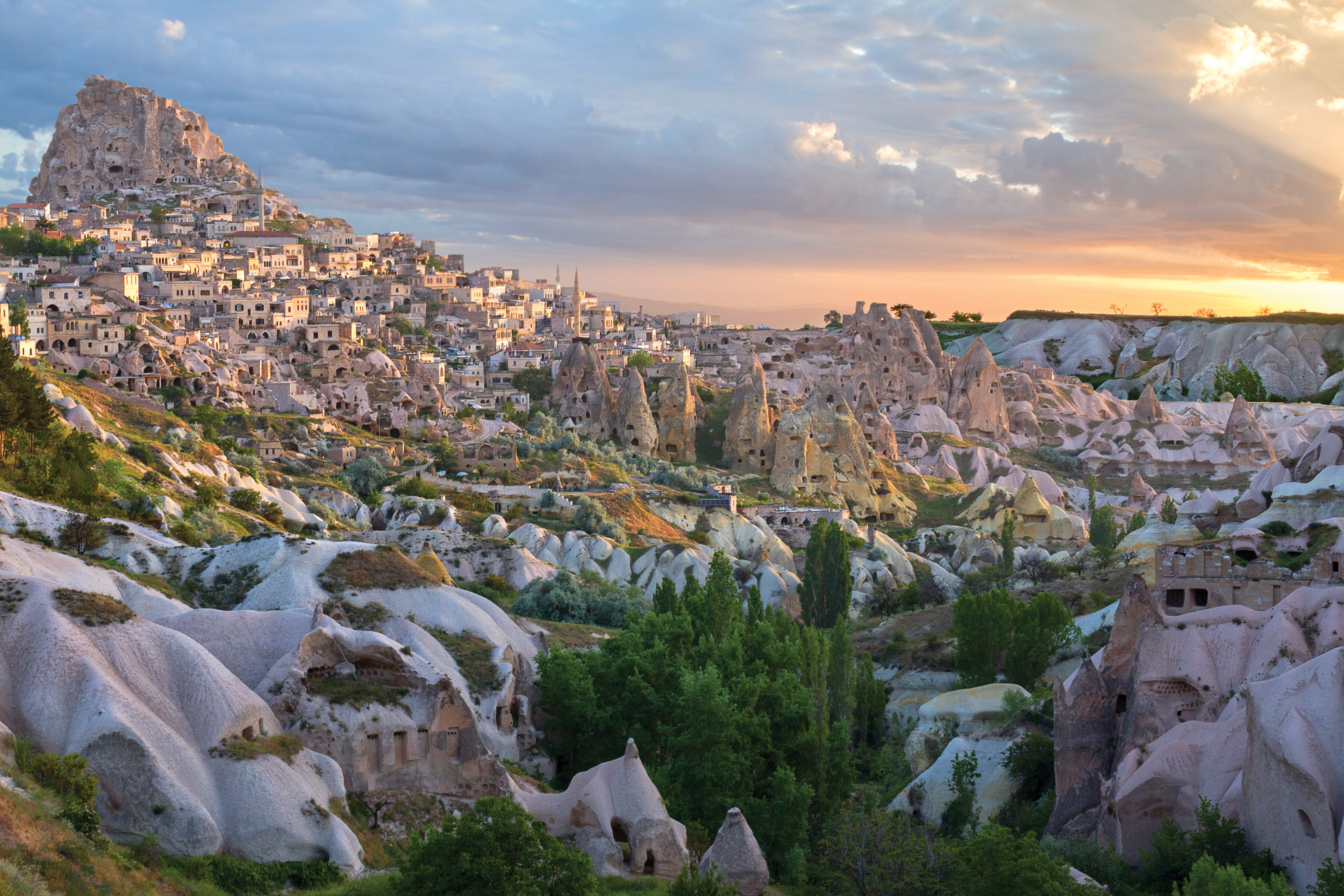
WHIRLING DERVISHES
We take our seats in the front row of the dimly lit room. The music begins quietly, with the unfamiliar sounds of ancient instruments filling the air. A singer joins in with a haunting melody. The whirling dervishes enter and stand serenely, waiting. Oh-so-slowly, the first dervish begins to spin, and one by one, the others join in, their faces trance-like. As they whirl, one hand is raised towards the heavens, while the other points down towards the earth, signifying the connection between the divine and the earthly realms. We sit mesmerized as the spinning increases in intensity, the flowing white robes almost brushing us as they glide by. The whirling dance originated as a religious ritual, tracing its origins to the teachings of the Persian poet and mystic Rumi in the 13th century, but it has also become a symbol of Turkish culture. The visual beauty of the dance, combined with the music and robes creates a captivating spectacle.
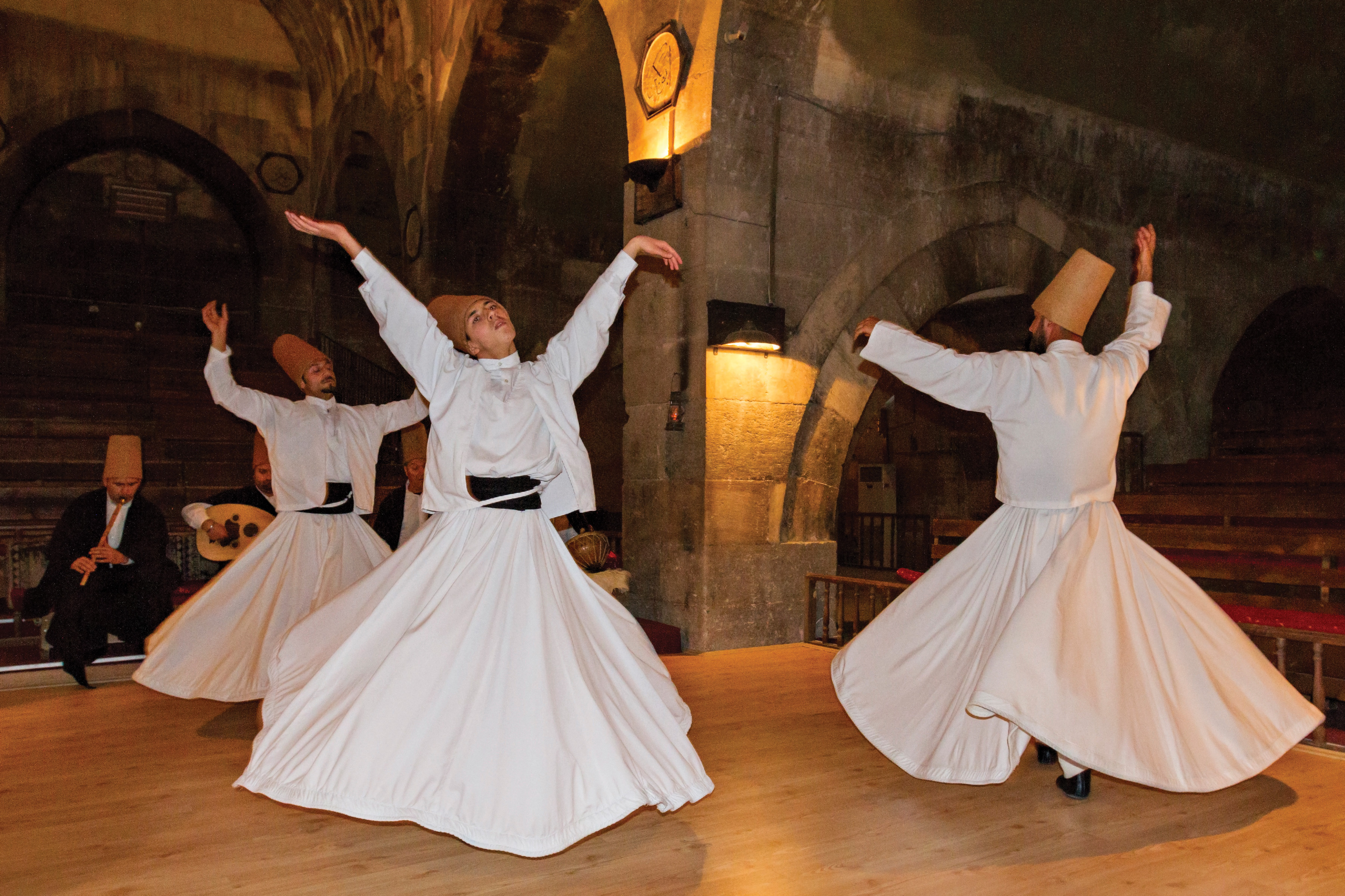
Written by Linda Crawley for Cruise and Travel Lifestyles (Fall 2025)
Photography by Mehmet Ozbalci and Linda Crawley.
Popular Articles & Videos
- Video: Meet the Wine Maker in the 'Tuscany of Austria' on the Danube
- You Need This Suitcase For Your Next Trip to Wine Country
- 3 New, Impossibly Picturesque Boutique Hotels That Make it Easy to Dream About Your Next Trip to Europe
- Cruising with History on Sea Cloud
- Video: Alaska Wildlife Encounters You Can't Miss






